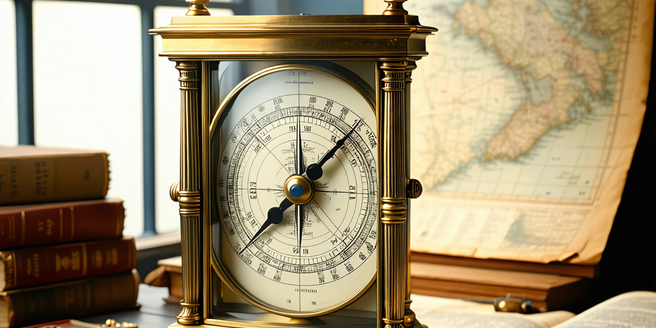
Understanding Barometers: An Overview
Barometers are essential tools in meteorology, used to measure atmospheric pressure. Invented in the 17th century, these devices help predict weather changes by indicating pressure variations. A barometer’s principle involves balancing the weight of mercury, or other liquids, against atmospheric pressure. When the atmosphere exerts greater pressure, it pushes the liquid higher, and vice versa. This movement allows meteorologists to anticipate weather shifts. An increase in pressure typically suggests fair weather, while a decrease often foretells stormy conditions. Barometers can be analog or digital, with each type offering unique benefits. For instance, digital barometers provide precise electronic readings, while traditional mercury barometers offer visual appeal and historical charm. To ensure accurate readings, it’s vital to maintain barometers carefully and calibrate them regularly.
The Science Behind Air Pressure
Air pressure, exerted by the weight of air in the Earth’s atmosphere, is a fundamental concept in meteorology. It decreases with altitude, as the column of air above becomes less dense. Measured in units like millibars or inches of mercury, air pressure influences weather patterns and is affected by various factors including temperature and altitude. Warmer air tends to rise, causing lower pressure, while cooler air sinks, leading to higher pressure. Understanding these pressure changes helps meteorologists forecast weather: low pressure generally indicates stormy weather, whereas high pressure signals clearer skies. Barometers are essential instruments for tracking these pressure variations, enabling accurate predictions for climate conditions. They play a critical role in aviation too, as pressure readings are vital for safe aircraft operation and navigation.
Types of Barometers and Their Functions
Barometers come in different types, each serving a unique function. The most traditional are mercury barometers, consisting of a glass tube and a reservoir of mercury. Mercury levels fluctuate with atmospheric pressure changes, providing readings. Aneroid barometers, meanwhile, use a small, flexible metal box called an aneroid cell. Changes in air pressure cause this cell to contract or expand, moving a needle on a dial to indicate pressure levels. Digital barometers, available in modern formats, use sensors to provide precise, electronic readings. Each type offers benefits: mercury barometers are precise but fragile, aneroid barometers are robust and portable, while digital barometers offer accuracy with ease of use. By understanding the functions of these barometers, users can choose the best one suited for their needs.
How to Read a Barometer Accurately
Reading a barometer accurately requires understanding its calibration and scale. Begin by ensuring the barometer is properly calibrated according to local atmospheric conditions. Many barometers have adjustable dials; it’s important to set it to the correct altitude if applicable. For analog barometers, read the needle’s position on the scale carefully to determine the pressure measurement. Be familiar with the units of measurement, such as millibars or inches of mercury, to interpret the readings correctly. Observing trends over time, rather than single readings, provides more useful information for weather prediction. Keep the barometer in a consistent, indoor environment free from temperature fluctuations to ensure precision. Regular maintenance, including cleaning and calibration checks, is important for preserving the barometer’s accuracy and longevity.
Practical Applications of Barometric Readings
Barometric readings are practical tools for a variety of applications. In meteorology, they are used to predict weather conditions, affecting agriculture, aviation, and outdoor activities. Farmers rely on barometric pressure to make decisions about planting and harvesting, ensuring crops are not damaged by unexpected weather. Pilots use pressure readings for flight planning and safe navigation. Sailors and outdoor enthusiasts consider barometric trends for safety, avoiding severe weather. Additionally, in fields like healthcare, barometric pressure can influence conditions such as joint pain and headaches, allowing for effective planning and management. Engineers use barometric data to design structures that can withstand atmospheric pressure changes. Barometers offer valuable insights across disciplines, making them indispensable tools for predicting environmental changes and making informed decisions.
